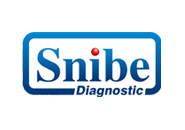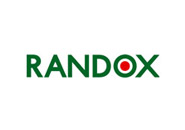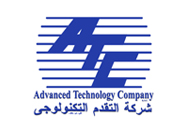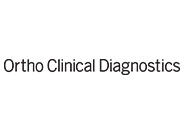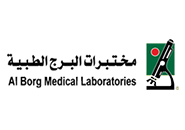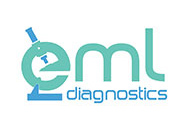Quality Management in Point of Care
By Cameron Martin, Coordinator, State-Wide Point of Care Testing, Health Support Queensland , 3 May 2017
Managing quality in Point of Care Testing (PoCT) is something quite different to managing quality in the medical laboratory. Although the same ISO and guidelines may be used, successful implementation at the point of care requires an appreciation of the differences, and a somewhat differently tailored approach.
These differences range from the attitude of the people performing the testing, the nature of the instruments used, the testing environment itself, access to training, and the traceability of both documentation and results, including patient results, and quality control results.
It is helpful to adopt the belief that PoCT is simply an extension of the laboratory to the bedside, and there is really no reason why the test performance cannot be of similar quality. This should always be the aim of the PoCT coordinator and lab manager responsible for providing a point of care service.
Issues caused by the Analysers themselves, and Quality Control
The manufacturers of PoCT instruments have in many cases designed their instruments specifically for PoCT, rather than lab use, and this can cause issues when rigorously attempting to apply quality systems and standards designed for laboratory instruments, to PoCT instruments and processes.
For example when evaluating PoCT instruments designed to use whole blood as a primary sample type, there is an immediate disconnect. Most laboratory instruments apart from haematology analysers, and benchtop blood gas analysers, are designed to use serum or plasma samples.
This may mean that a direct comparison is not possible. If the PoCT analyser can also utilise serum or plasma samples as a secondary sample, then a three way comparison may be needed to ensure that the PoCT analyser produces comparable results to the laboratory, when each analyser is running its designed preferred sample type.
Similar issues may arise when performing Quality Control (QC) or Quality Assurance (QA). Some QC materials designed for laboratory instruments may not perform as anticipated on a PoCT analyser.
Often, if you want pre-assayed values you are basically restricted to the manufacturers own material. This is important, as the use of assayed value QC material is essential to the QC process of cartridge based analysers.
QA samples intended for lab instruments may occasionally behave unpredictably on cartridge based instruments, leading to difficulties in QA interpretation.
Fortunately with the rise in popularity of PoCT, more QA programs and materials designed specifically for PoCT instruments and cartridge based testing, are becoming available.
In the case of cartridge based analysers using third party QC material there is the potential for matrix based interference. Such interferences may give the impression of poor analyte recovery, or imprecision, which is not seen however when running patient samples, or the manufacturers own QC material. This effect should not be mistaken for poor performance on the part of the testing system.
A good rule of thumb when performing QC and QA at the point of care on any cartridge based analyser is, that whilst they still provide valuable information, exactly what they provide is subtly different to the same QC and QA on a traditional lab instrument.
In single use cartridge based analysers, QC at a particular level, checks the performance of one cartridge, which is presumed to represent all the other cartridges of that lot.
So the QC process in a cartridge based analyser is really a discrete process that checks the suitability of use for a particular lot of cartridges, as the cartridges largely determine the test results. The next time a different cartridge lot is tested, you are effectively testing a “new” analyser.
In the lab, QC checks the performance of the whole analyser at the time the QC was run, but is a continuous process, because the next time a QC is run it is the same analyser, and often still the exact same reagents on board.
What you are looking for is analytical drift on that analyser, which may require adjustment, service, or re-calibration to rectify.
When performing QA on a cartridge based analyser what you have is an indication of the average performance of multiple cartridge lots for the same test in a short time period. So it is an indication of the performance and imprecision of your PoCT system as a whole.
In the lab QA will tell you the average performance of multiple analysers of the same type over a similar short time period. So it more an indication to the lab of the performance of individual analysers as part of a group.
The difference is the analyser electronic self-check. In most high quality PoCT analysers the self-check will often alert you to a fault in the “analyser” itself, long before QC or QA would have picked it up via the cartridges. This is highly necessary in an analyser that is designed to be portable, and thus subject to dropping and other physical insults at any time.
How this e-check is performed varies, in some analysers it is a discrete process where a special check cartridge is used in place of a test cartridge. In other analysers it is built in, and runs automatically every time the analyser is powered on, in others still, both systems are used together.
A problem arises when the manufacturer believes that a sufficient number of smart checks or “E-QC” checks have been built into the analyser to obviate the need for any external QC at all.
Although the checks can indeed be comprehensive, accreditation bodies and inspectors may not be inclined to see it that way, and still require external QC to be performed as well.
Unfortunately this also often means the manufacturer therefore does not supply QC material. In that case suitable third party material or a parallel patient testing system may be required.
Also it is important to remember that in a cartridge based system, such internal electronic checks only check the “analyser”, without additional “liquid” QC, the cartridge component may still remain an unknown quantity in test results.
Finally and most importantly to properly quality manage a PoCT testing system, a good middleware program is a necessity. A good middleware will track and list all your instruments; it will receive, record, track, and monitor QC and QA, and allow you to pull data and publish management reports, which you can send to your operators.
Issues caused by the people
A major consideration is that for clinicians performing PoCT, their core task is the diagnosis and treatment of patients, and PoCT is just one of the means to this end.
What this means is that their available time and attention to detail, may not be the same as a laboratory person performing a similar test.
The end result is that compared to the lab, pre-analytical error can become a significant contributor to total testing error, and the approach to rectify this must be multi-factorial.
To expect acceptable testing performance from clinicians it is essential to make the testing process as organised and easy to follow as possible.
This begins right back at the selection of analysers, sometimes it is necessary to sacrifice a bit of accuracy or precision in favour of ease of use.
A super accurate analyser with a complicated testing process, will in all actuality possibly end up producing lower quality results, and suffer more breakdowns, than a simpler, but perhaps slightly less accurate analyser, that is easy to use.
Remember at all times that performing pathology tests is an additional task to the clinician, not their core skill. A complicated testing process has more steps where mistakes can be made resulting in errors and re-testing.
To keep testing quality high, and fulfil the requirement for traceability of results, untrained operators must be prevented from performing tests.
As simple as they are, modern PoCT analysers need the operator to stick to the correct procedure, what might seem like a minor procedural deviation to a clinician, can result in a seriously misleading test result.
Most modern analysers allow for a lockout / and or warning of unlisted operators.
But before a lockout of operators can occur, the opportunity to train must be made readily accessible to all potential users.
This can be by face to face (FTF) training but it is often difficult to have lab staff available for repeated sessions, or for out of hours shifts, which is a great disadvantage. Also the effectiveness of the training is totally dependent on the skill of the presenter, and subject to distractions for the trainees particularly if being performed in a working department.
On-line training systems allow the delivery of consistent content which is freely available 24/7 and can be completed as often as the trainee wishes.
The lab can easily control and update on-line content when required, whereas FTF requires tracking down and replacing all training materials, and updating all trainers. On-line systems are the best way to keep a mobile PoCT workforce up to date.
The training system must be supported by a robust document control system. Operational documents for use near an analyser must be brief, to the point, contain all the essential information, and no more.
Long descriptive laboratory style documentation will not work, and probably will not be used; tempting staff to make up their own simplified versions. Not only will these versions be undocumented, but bits of important testing information may be omitted, leading to testing errors.
Similarly to on-line training systems, on-line documentation is the way forward for the modern PoCT network. Documents can be modified, verified, and notifications sent in a matter of minutes, web links can be set up to always point to the most recent version, reducing the chances of old documentation continuing to being used.
Better yet if the document control system also has provision for other quality related activities, such as incident and resolution logging, training recording, and analyser records where issues raised with the equipment can be logged alongside maintenance and repair records, then the testing system will have progressed a long way towards the requirements for compliance with the ISO and full accreditation.
The quality management of modern large point of care systems is complex, but need not be complicated, if the equipment and management systems are carefully chosen.
Finally and most importantly to properly quality manage a PoCT testing system a good middle ware program is a necessity. A good middle ware will track and list all your instruments; it will receive, record, and pass your results on to the LIS.
The middle ware will track your test operators, push trained operator ID’s and messages to individual instruments, track and monitor QC and QA, and allow you to pull data and publish management reports, which you can send to your operators.
The use of PoCT middleware systems, combined with centralised document control, and on-line training systems will allow a degree of control of a PoCT system impossible to duplicate with traditional manual processes as used for many years in the medical laboratory.




